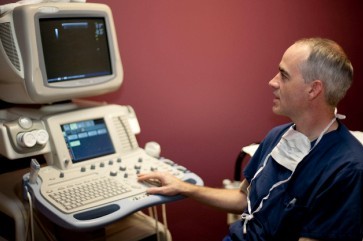 Search
Search
 Search
Search
 B ultrasound examination of the kidneys is medical imaging instrument for detecting shapes, location and local pathological changes of the kidneys. It can be used in clinic to exam renal parenchymal diseases and ectopic lesions such as renal tumors, kidney cysts, renal abscess, hydronephrosis, renal prolapse, kidney stones, etc.
B ultrasound examination of the kidneys is medical imaging instrument for detecting shapes, location and local pathological changes of the kidneys. It can be used in clinic to exam renal parenchymal diseases and ectopic lesions such as renal tumors, kidney cysts, renal abscess, hydronephrosis, renal prolapse, kidney stones, etc.
The clinical applications of B ultrasound and its significances
1. Kidney positioning. It can be used to diagnose renal prolapse and renal replacement and guide the operation of renal aspiration. The location and size of kidneys is very important for diagnosis and differential diagnosis of kidney diseases. It is simple and accurate and causes no additional damages to the kidneys. Normal kidney has certain activity range and usually it is within 3cm. If its activity range exceeds 3cm, it is usually diagnosed as renal prolapse and if there is replacement and it can not be found in the location where it is supposed to be, it can be wandering kidney, ectopic kidney or congenital born with only one kidney.
2. Diagnosis for hydronephrosis. B ultrasound has high accuracy for diagnosing liquid substances and therefore it is very accurate to diagnose hydronephrosis and kidney cysts. B ultrasound can make clear the size and number of cysts in the kidneys and severity of hydronephrosis.
3. Diagnosis for renal parenchymal diseases. The size, number and location of tumors in the kidneys can be clearly shown in B ultrasound.
4. Diagnosis for kidney stone. Kidney stones have great differences with renal tissues in acoustic properties and therefore even very small kidney stones can be detected with B ultrasound.
5. Diagnosis for transplanted kidneys. B ultrasound can be taken to monitor renal conditions after kidney transplant such as rejection, renal abscess, hematoma, urine seepage, etc. Severe rejections can cause obvious kidney enlargement.
B ultrasound has been widely adopted in clinic as a common diagnosis method of kidney diseases. The anatomical structure of kidney is very proper for B ultrasound. Renal tissues and structures like renal capsule, renal parenchyma and renal pelvis can all be shown in B ultrasound. It can accurately measure the size, location and shape of the kidney and distinguish weather it is renal cystic diseases or not as well as monitor conditions of transplanted kidneys.
What is more, B ultrasound is very simple and cheap and causes no damages to the kidney. However, since its reflections of renal damages are indirect, it is often the preliminary diagnosis for kidney disease, more tests are needed to know the severity of illness condition and the remaining kidney functions.